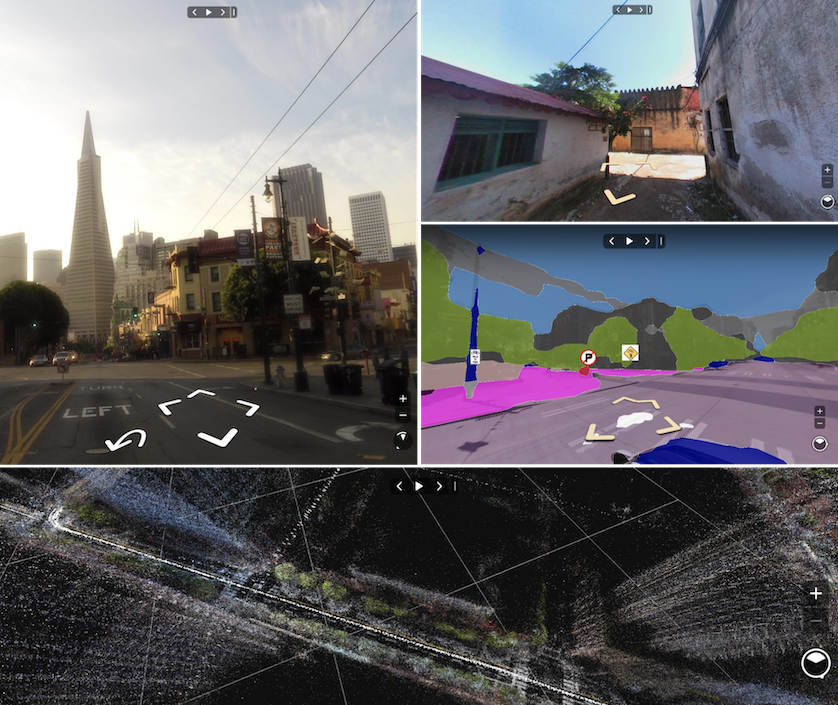MapillaryJS is a client-side JavaScript library for interactive, extendable street imagery map experiences on the web. It takes spatial, semantic, and texture data and renders it using WebGL. MapillaryJS can be customized with camera controls, user interactivity, and data providers and it can be augmented with geospatial rendering, animation, and content placement.

To start using MapillaryJS with data from the Mapillary platform, you need an account. When signed in, you need to register an application to get a client access token. When providing your own data, no access token is needed.
ES6 bundler
Install the package via Yarn (or npm).
yarn add mapillary-jsUse a CSS loader or include the CSS file in the <head> of your HTML file.
<link
href="https://unpkg.com/[email protected]/dist/mapillary.css"
rel="stylesheet"
/>Include the following code in your JavaScript file.
import { Viewer } from "mapillary-js";
const viewer = new Viewer({
accessToken: "<your access token>",
container: "<your HTML element ID>",
imageId: "<your image ID for initializing the viewer>",
});TypeScript
Install the package via Yarn (or npm).
yarn add mapillary-jsUse a CSS loader or include the CSS file in the <head> of your HTML file.
<link
href="https://unpkg.com/[email protected]/dist/mapillary.css"
rel="stylesheet"
/>Include the following code in your TypeScript file.
import { Viewer, ViewerOptions } from "mapillary-js";
const options: ViewerOptions = {
accessToken: "<your access token>",
container: "<your HTML element ID>",
imageId: "<your image ID for initializing the viewer>",
};
const viewer = new Viewer(options);CDN
Include the JavaScript and CSS files in the <head> of your HTML file.
<script src="https://unpkg.com/[email protected]/dist/mapillary.js"></script>
<link
href="https://unpkg.com/[email protected]/dist/mapillary.css"
rel="stylesheet"
/>Add a container to the <body> of your HTML file.
<div id="mly" style="width: 400px; height: 300px;"></div>The global UMD name for MapillaryJS is mapillary. Include the following script in the <body> of your HTML file.
<script>
var { Viewer } = mapillary;
var viewer = new Viewer({
accessToken: "<your access token>",
container: "mly",
imageId: "<your image ID for initializing the viewer>",
});
</script>- Getting Started with MapillaryJS
- Developing Extensions
- Examples
- API Reference
- Migration Guide
- Contribution Guidelines
Facebook has adopted the Contributor Covenant as its Code of Conduct, and we expect project participants to adhere to it. Please read the full text so that you can understand what actions will and will not be tolerated.
MapillaryJS is MIT licensed.


